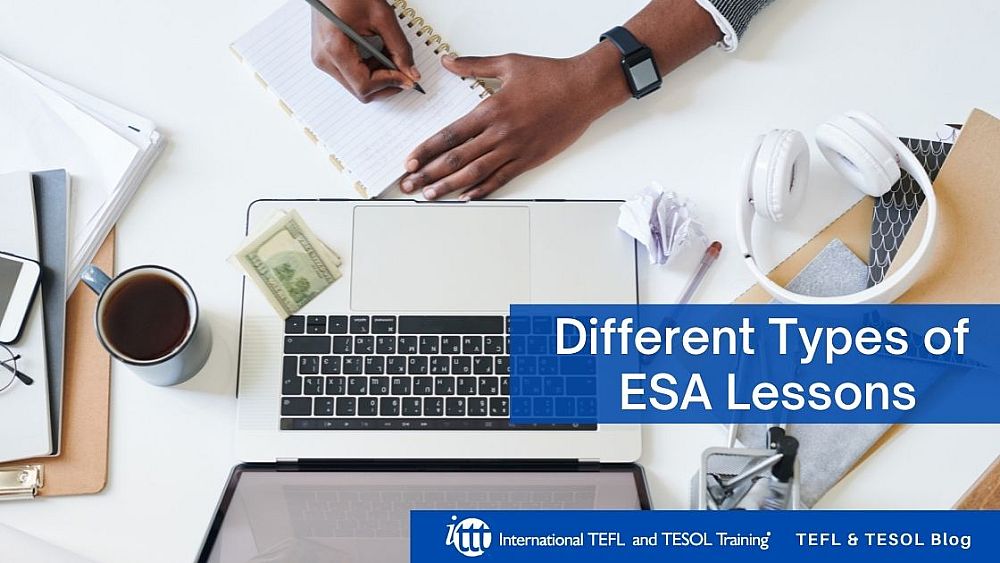Different Types of ESA Lessons

If every single lesson that we undertook with our students was a straight arrow ESA lesson then it is quite possible that the students would be able to predict what is going to come up next. Whilst this might be good for the lower level students, it could potentially become a little bit boring for our higher level students. Harmer considered this and his response was to generate two other types of ESA lesson that we can use to try and generate a little bit more interest.
Table of Contents
Watch the video about this topic
Are you ready to teach English as a foreign language?
Check out what our course grads say in our many video testimonials!
Watch the video about this topic
The first of these is known as a boomerang lesson and the second is known as a patchwork lesson.
First let us recap the structure of a Straight arrow ESA lesson. This takes each of the three phases in turn, so a picture of the lesson looks like this: Engage ïƒ Study ïƒ Activate
At this point it is also worth noting that any style of ESA lesson will start with an Engage activity and end with an Activate activity.
The second type of lesson is known as the boomerang and as the name implies what happens in a boomerang lesson is that we send something out to start with and that comes back to us at a later stage.The structure of a boomerang lesson is shown as: Engage ïƒ Activate 1ïƒ Study ïƒ Activate 2
As always we start with an engage phase, that's to get them talking and thinking in English. From the engage we then move directly into an activate activity, before we have studied any of the language. What is likely to happen here is that the students are not going to create the perfect language, either in terms of their vocabulary or in terms of grammar. What this is going to indicate is a gap in the students' knowledge.
What we can then do knowing what that gap in the knowledge is, is to study that particular gap.
Once we've completed the full study phase, including worksheets to check understanding, we can then reactivate. This means we will ask the students to do a second Activate phase, similar to the first one. In the second activate phase we hope to see that they are now able to use that knowledge from the study phase.
In any patchwork ESA lesson, all we can say is that we're going to start with an engage phase and we're going to end with an activate phase and really anything we like can happen in between.
Here in terms of the E,S and A's it may look like this;
Engage ïƒ (Study and Activate activities as needed) ïƒ Activate.
As these lessons are quite complicated to plan and teach we reserve them for higher level classes.
Are you ready to teach English as a foreign language?
Apply now & get certified to teach english abroad!
Speak with an ITTT advisor today to put together your personal plan for teaching English abroad!
Send us an email or call us toll-free at 1-800-490-0531 to speak with an ITTT advisor today.
Related Articles:
- Top 10 Cities in Europe with the Highest Demand for English Language Teachers
- 5 Reasons To Take A TEFL Course Right Now - Even If You Are Not Leaving Yet | ITTT | TEFL Blog
- All the Documents You Will Need to Teach English Abroad
- The Impact of Positive Motivation on an ESL Classroom
- You're Never Too Old to Change Your Life and Do a TEFL Course | ITTT | TEFL Blog
- Getting Student Placement Right - The Best Desk Arrangements for EFL Students



